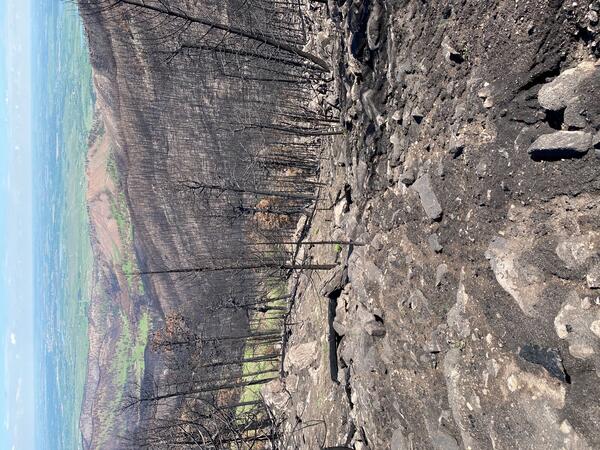Debris flow in the 2025 Eaton Fire burn area, California
Debris flow in the 2025 Eaton Fire burn area, CaliforniaA postfire debris-flow deposit in Rubio Canyon, in the Eaton Fire burn area Los Angeles, County, California. Debris flows were triggered by intense rain on the recently burned hillslopes. Mud- to boulder-sized sediment was deposited by the debris flow in this image. The flow also damaged trees near and within the channel where the flow traveled.



























